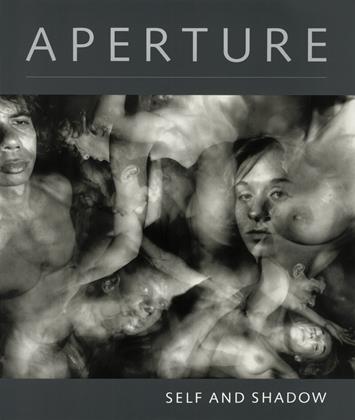Self and Shadow
Editor's Note
Moving beyond photography’s unrivaled capacity for description, the photographers in “Self and Shadow” create matrices of psychological meaning, mirrors of experience and metaphors for contemplation.
Every portrait is the record of a transaction, an exchange between the photographer and the sitter in which, as Max Kozloff writes, the sitter offers up an image of him or herself to the camera in the hope that the photographer will acknowledge and accept it. As Donald Kuspit notes in his essay, “The Repressed Face,” we all offer to the world, as well as to the camera, faces that are more or less closed or open, that both reveal and hide. It is this double enigma, of photographic and psychological meaning, that “Self and Shadow” explores.
Photographs of family and friends—represented by the pictures of Nicholas Nixon, Sally Mann, Larry Fink, and Judith Joy Ross—serve as reservoirs of feeling, bulwarks against time, while Paul Auster’s text provides a moving description of the experience of looking through photographs of one’s father after his death. In their carefully staged and styled formal portraits, Mariana Cook and Timothy Greenfield-Sanders use the clues of posing, lighting, and props to reveal personality—or to conceal it, or even to invent it. Will McBride records the experience of an alienated young man whose evolution points beyond the particular to larger societal issues. Brian Weil brings a deeply moving, elegiac vision to questions of life and death as embodied in the experience of AIDS. Photographs by Peter Campus and John Coplans explore the face or body as an expressive landscape whose features carry their own meanings. The photographs of Judith Golden, Mauro Altamura, and Peter Hujar play out dramas of dream or nightmare. Lynne Augeri’s theatricalized figures of eros and power, Susan Shaw’s shadowed faces, and Nancy Burson’s chimeras (generated by computer manipulation) all belong to this troubling genre in which all boundaries are down, all taboos challenged.
By recognizing the act of making a photograph as the problematic, open-ended process it is, these photographers have produced pictures that point to the depths of personality. The images and essays in this issue address photography’s rich and frequently paradoxical capacity to simultaneously record and evoke, name and suggest—to be both fact and fiction, to delineate both self and shadow.
THE EDITORS
Subscribers can unlock every article Aperture has ever published Subscribe Now
The Editors
-
 Theme And Variations
Theme And VariationsThis Thing Called War And These People Called Photographers
Fall 2012 By Simon Norfolk, The Editors -
 Editor's Note
Editor's NoteAperture
Summer 1997 By The Editors -
 On Location
On LocationRobert Voit: New Trees
Spring 2010 By The Editors -
 Object Lessons
Object LessonsAnnie Smith Peck’s Postcards, 1908
Spring 2016 By The Editors -
 Editor's Note
Editor's NoteSounds
Fall 2016 By The Editors -
 Editor's Note
Editor's NoteOn Feminism
Winter 2016 By The Editors













